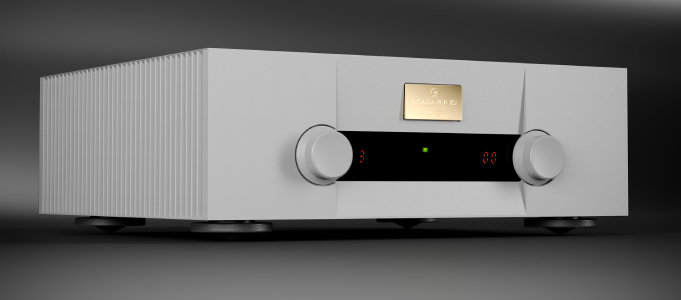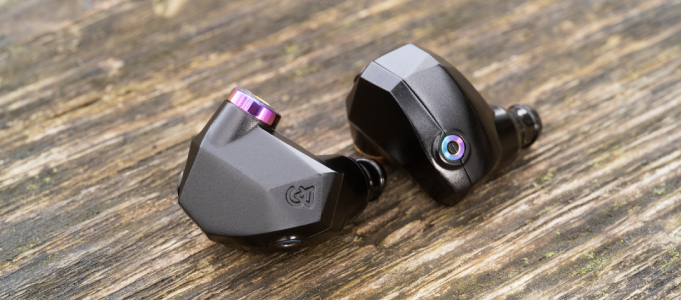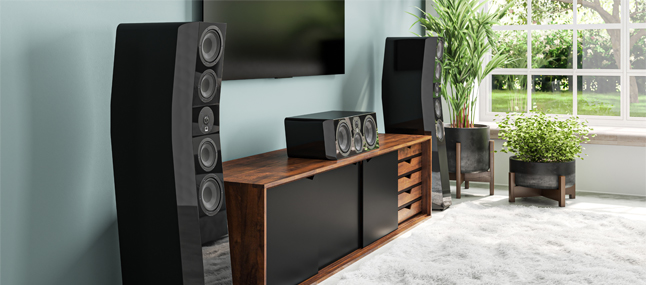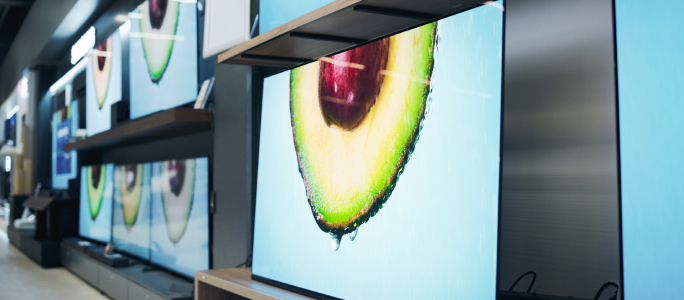Review: Pioneer Udp-lx800 Flagship 4k Universal Disc Player
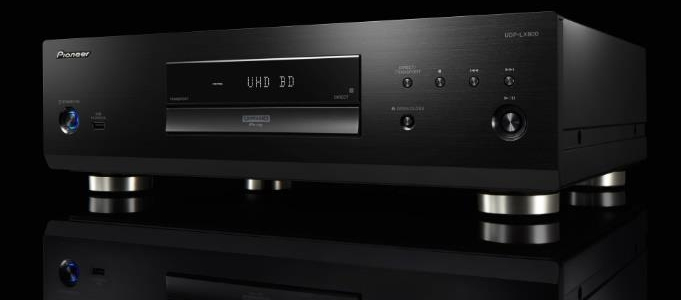
Pioneer's UDP-LX800 Universal Disc Player's announcement was timed almost precisely after Oppo announced its exit from the Blu-ray player market. We put the flagship offering from Pioneer, the UDP-LX800 through its paces.
 PIONEER
PIONEER
UDP-LX800
UNIVERSAL DISC PLAYER
£2,199
I loved my Oppo disc players as much as the next AV geek, but there’s no denying that since the brand shock-exited the market last year, things have become interesting in the world of high-end disc players.
There have been a few manufacturers trying to fill the hole that was left since. Panasonic, for instance, is now on their second round of such players with the release of the UB9000 in November 2018.
Not to be outdone, Pioneer also launched its £999 UDP-LX500 universal disc player, which we reviewed in December. Not content to stop there, Pioneer then announced the release of its flagship £2,199 UDP-LX800.
While it’s hard to convince all but AV purists why they need to spend more than a few hundred bucks on a universal disc player, I imagine many AV purists are going to face the same dilemma when considering the LX-800.
The very same question was on my mind too. Why on earth would you want to shell out nearly four times as much as I paid for the Oppo UDP-203, and how much better could it really be?

Industry veterans, Pioneer, needs little in the way of introduction. Just in case you haven’t spend as much time in the AV scene, be assured they have serious credentials behind them.
In addition to producing AV receivers, Pioneer has also played a hand in the development of the compact disc (CD), laser disc, DVD, plasma and OLED technologies. Pioneer’s plasma televisions were legendary, offering a level of performance that out-classed most if not all other TVs of the day.
Pioneer also has a reputation for producing excellent DVD and Blu-ray players, both at the budget and higher-end price points. So, although £2,199 is a pretty big pill to swallow for a universal disc player, if anybody can pull it off, Pioneer can.
WHAT’S IN THE BOX?
The Pioneer UDP-LX800 offered up its first surprise as I lugged it down a couple of flights of stairs. Weighing 13.8 kg (probably closer to 15kg in the box), I was very aware of what I was carrying.
That’s the sort of weight you’d typically associate with a half-decent AV Receiver that’s packing multiple channels of amplification. It’s also 9.5kg heavier than my own Oppo UDP-203 and nearly 4 kg heavier than Oppo’s flagship UDP-205.
As I soon discovered, most of the weight is due to the outstanding build quality of the player. The UDP-LX800 sports a 1mm steel chassis, which is further reinforced by 3.6 steel plating. Both sides of the unit are aluminium, commonly used for its ability to dampen vibrations.
The LX800’s rigid construction creates a lower centre of gravity and reduces vibration. Furthermore, Pioneer has eschewed the use of ventilation holes, to reduce noise emanating from the disc mechanism.
The UDP-LX800 features a three-block internal layout, consisting of the power supply, drive/digital processing, and analogue audio. The player has been designed in this way to reduce interference between each of these three key areas.
It also uses a six-layered internal circuit board, touted for its ability to eliminate digital noise. It features the very same analogue section as found in Pioneer’s PD-70AE Super Audio CD Player.

The front fascia of the UDP-LX800 is finished in the same brushed-black aluminium that is commonplace among AV components. This means the LX800 shouldn’t be out of place with the other gear in your rack. On the left of the player is a large power button, which is illuminated by a blue light when the player is turned on, and a USB input.
The centre of the fascia is dominated by a large LED display and the disc-drawer, which is the largest and most solidly built disc-drawer I have ever seen. To the right of the screen are fast forward/rewind, skip, stop, direct (more on this later) and play/pause buttons.
The rear of the unit has two HDMI outputs, the second of which is capable of delivering a dedicated audio signal. In addition, there are digital audio optical and coaxial outputs, USB in, ethernet port, RS-232C, RCA unbalanced analogue outputs, XLR balanced audio outputs, and a zero signal terminal.
I was intrigued by the zero signal terminal, which Pioneer says that when connected to an unused audio input on the AV receiver, it aligns the reference level (GND) of the AVR to the UDP-LX800.
Surprisingly, at least initially, was the absence of multi-channel analogue audio outputs, particularly for a player at this price-point. The big takeaway from this is that the UDP-LX800 is designed to provide superior two-channel and HDMI playback.
The UDP-LX800 supports HDR 10, Dolby Vision and HDR 10+ via a future firmware update.
In terms of build quality, the UDP-LX800 offers sublime build quality and without a doubt, is the best I have ever seen from any disc player.
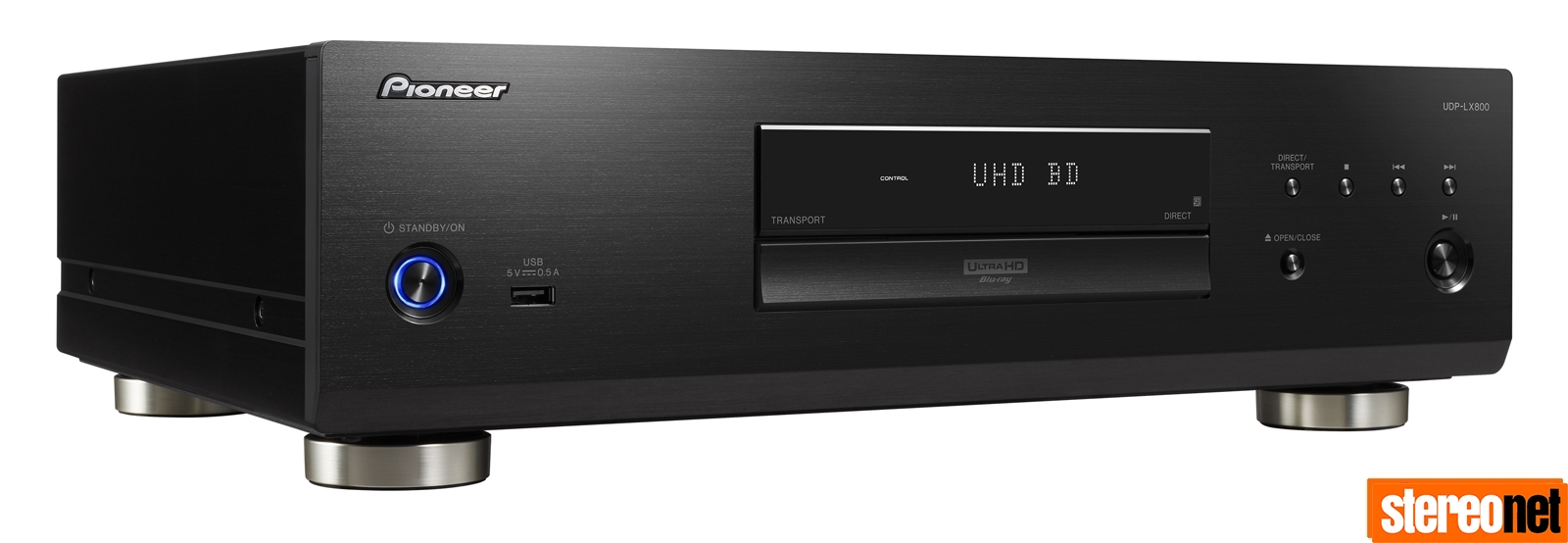
SETUP
 As with all disc players, installation is pretty straightforward. Taking the place of my Oppo UDP-203, Pioneer’s UDP-LX800 was connected via HDMI to my Denon AVC-X8500H which in turn powered custom built VAF custom i91 front and centre speakers, i90 rear speakers, Sonique in-ceiling speakers and two 10-inch VAF Gravitas subwoofers.
As with all disc players, installation is pretty straightforward. Taking the place of my Oppo UDP-203, Pioneer’s UDP-LX800 was connected via HDMI to my Denon AVC-X8500H which in turn powered custom built VAF custom i91 front and centre speakers, i90 rear speakers, Sonique in-ceiling speakers and two 10-inch VAF Gravitas subwoofers.
The video was delivered by a Sony VLP-VW270ES projector, projecting onto a Severtson Cine-Gray 100-inch 16.9 fixed frame screen.
On startup, you’re greeted by a setup menu which is rather utilitarian in appearance. Here you’ll find the usual setup questions, such as language, resolution and screen size. While I was satisfied with how the initial setup configured the UDP-LX800 for both SDR and HDR playback, it’s worth double checking everything in the Initial Setup menu.
Like Oppo’s UDP-203 and 205, you won't find Netflix, nor for that matter, any other apps tucked in amongst the UDP-LX800’s menus. Instead, Pioneer has done away with these to focus on one thing- the very best in terms of disc playback.
A quick tap of the Video Processing button on the remote will allow you to adjust Brightness, Contrast, Hue, Chroma Level, Sharpness, DNR and HDR-SDR Adjustment.
HDR-SDR Adjustment allows you to tell the UDP-LX800 the target brightness of your display in increments from 100- 700 nits. Here you can also tell the player the type of display it’s connected too (LCD TV, OLED TV, Projector, or Reference, and allow it to process the video signal based on what it deems best for your display type.
Setting the signal to ‘Reference’ will pass through the video signal without any processing applied (except for scaling etc.). Apart from the ability to specify the display type, the UDP-LX800 lacks an HDR optimiser function.

There’s also the option to change the player to either ‘direct’ or ‘transport’ - the latter turns off the UDP-LX800’s analogue circuitry.
With the Pioneer UDP-LX800 installed, my Sony VPL-VW270ES was calibrated for both SDR and HDR playback.
While there is the ability to either dim or switch off the entire LED display entirely, there’s no way to switch off the blue light around the power button. If your gear is out of sight, or in another room, you're probably not going to care, but if, like me, you need to control the light in your home theatre, it’s an annoyance.
The remote control that accompanies the UDP-LX800 is simple enough to use and backlit, which is a very welcome inclusion.

PERFORMANCE AND PLAYBACK
Combined with my Sony 270ES, the UDP-LX800 produced stunning images. Rich, detailed and with vibrant colours, the UDP-LX800 matched the image quality of my usual Oppo UDP-203. Likewise, used as a transport, the audio quality of the UDP-LX800 was the equal of the Oppo.
I tested the UDP-LX800 with the display type set to both ‘Reference’ and ‘Projector’. Switching from Reference to Projector provided a small but noticeable and welcome boost to the image brightness of UHD images.
Disc loading times were slower than what I’m used to from the Oppo, with the Ultra HD version of Mission Impossible Fallout taking 32 seconds to load. Disc playback, however, was whisper quiet and much quieter than my Oppo (a fairer comparison would have been Oppo’s UDP-205, which we didn’t have on hand for testing). To hear any noise from the Pioneer I had to put my ear right to the player, but from 30cms away, there was no audible noise.
A quick press of the information button calls forth all of the usual information, such as run time etc. Hold down the button a little longer, however, and you’ll be given a veritable treasure trove of information regarding the disc and the display it was mastered on.
In use, the Pioneer UDP-LX800 performed admirably, with my only criticism being a delay of around five seconds between hitting the eject button and the disc actually ejecting.

CONCLUSION
 Just like last year, 2019 is already shaping up to be the year that manufacturers are releasing ‘statement pieces’. Well built and over-engineered, yet with a strong focus on maintaining signal integrity and simplicity, the Pioneer UDP-LX800 is quite simply outstanding.
Just like last year, 2019 is already shaping up to be the year that manufacturers are releasing ‘statement pieces’. Well built and over-engineered, yet with a strong focus on maintaining signal integrity and simplicity, the Pioneer UDP-LX800 is quite simply outstanding.
To date, and without doubt, it's the most well-built universal disc player I have ever used. It may just be the most well-built piece of AV equipment I have ever used.
Used solely as a transport, there is going to be little if any difference between the Oppo, or for that matter most high-end disc players. The UDP-LX800 may lack the HDR optimiser of Panasonic’s recent offerings but makes up for it with class-leading build quality, and analogue DAC’s.
If you don’t need an HDR optimiser function and are looking for a ‘no comprise solution’ for Blu-ray, 4K Blu-ray and SACD playback, you owe it to yourself to check out the UDP-LX800.
For more information visit Pioneer.
Tony O'Brien
Tony is a certified ISF Calibrator by day, and an accomplished Audio-Visual reviewer specialising in theatre and visual products by night. Tony has calibrated and worked with some of the best home cinema designers throughout Australia.
Posted in:Hi-Fi Home Theatre Sources CD Player Blu-ray Players Applause Awards 2019
Tags: pioneer applause award
JOIN IN THE DISCUSSION
Want to share your opinion or get advice from other enthusiasts? Then head into the Message Forums where thousands of other enthusiasts are communicating on a daily basis.
CLICK HERE FOR FREE MEMBERSHIP










